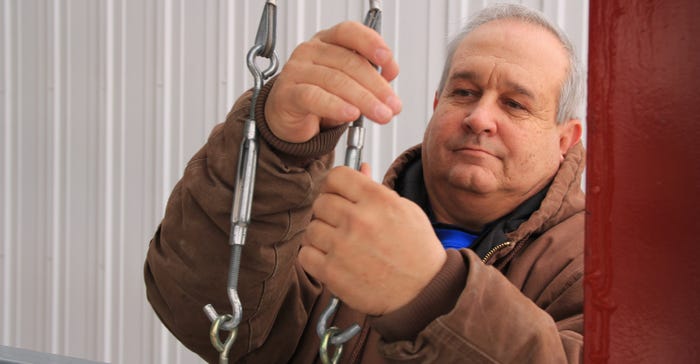
Dale Hadden, a 2020 Prairie Farmer Master Farmer from Jacksonville, Ill., says adding sulfur in the spring ahead of corn and soybean planting has increased yields for both crops. This will be his third year applying sulfur on all his corn and soybeans.
Hadden reports consistent 250-bushel corn yields from 5 pounds of ammonium thiosulfate (ATS) and 180 pounds of nitrogen per acre.
Related: Why you’re seeing more yellow corn
With the sulfate form of sulfur available as temperatures in the soil rise, microbes can use it and the other biologically necessary nutrients, nitrogen and phosphorus, to drive residue decomposition and mineralization.
Hadden’s friend and adviser, Brandt agronomist Ed Corrigan, says microbes need applied S to effectively put N and P to use in freeing up more nutrients from the soil. This is because there’s a deficit of sulfur from coal power plants following clean air regulations.
“I apply sulfate with a weed-and-feed program ahead of corn,” Hadden says. “And with my soybeans, I just put it in with my burndown,” Applying it right before microbes are able to start using the nutrient at 50-degree-F soil temperatures results in the greatest yield improvement.
Hadden and Corrigan say it pays to prime the microbes in soil with nutrients. Doing so helps to counteract immobilization.
“If you planted April 1 or April 15, it was the best thing to maximize corn yield, Corrigan says. “However, in order to realize that yield potential, you had to supplement your nutrition with sulfur and nitrogen, priming the soil to get it going.”

Elemental sulfur and sulfur stored in soil take a while to break down into sulfate. By applying S in the spring instead, Corrigan says the ground will reach optimal levels of mineralization for corn by around the V4 growth stage. In 2019 and 2020, corn plants on acreage that didn’t receive sulfur also didn’t receive optimal nutrition from the soil until about the V7 growth stage or later. That results in a 20% to 30% yield penalty, Corrigan adds.
Brandt trials in Pleasant Plains, Ill., showed adding sulfate ahead of corn in the spring produced an 18.8-bushel-per-acre yield advantage in 2020.
Corrigan says the yield advantage came from the spring’s unusually cool soil conditions. When soil temperatures remain cool into May like they did in 2020, and wet conditions cut off oxygen like they did in both 2019 and 2020, microbes slow their process of breaking down residue and mineralizing nutrients for the crop. By applying sulfur on all his corn and soybeans in both 2019 and 2020, Hadden was able to drive mobilization of nutrients from the soil.
Corrigan notes it’s better to place sulfate in the soil in spring as ATS or ammonium sulfate than foliar-apply it later in the season. This is because half of the benefits of sulfur go to helping mineralization in the soil, not the plant directly.
“It’s not like we should be applying the sulfur directly to the plant; we need to be supplying it partly to the soil and partly to the plant. That’s the key to unlocking high yields," Corrigan concludes.
About the Author(s)
You May Also Like




